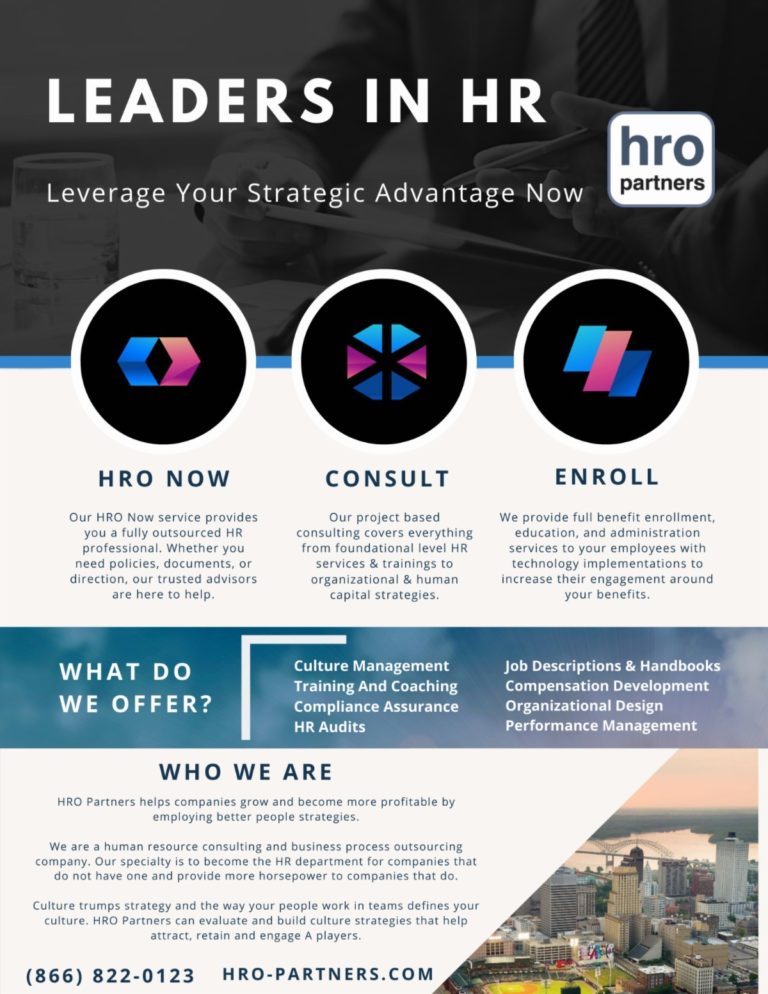Workers Can Finally Return to the Worksite, but are They Willing to Ditch Their Pajamas?
powerful. simple. hr solutions
A year and a half of remote work allowed many employees—over Zoom meetings and the like—to wear pajamas, sweatpants, and T-shirts as acceptable professional wear. Some employees even stopped wearing pants as videoconference calls allowed for greater flexibility in wardrobe selection
Those dress-down days may be coming to a close, however, as many companies begin returning to in-person work. The transition to the physical workspace has forced managers to confront a difficult task: how to reinforce expectations around professional clothing after more than a year of relaxed dress codes
Ben Lamarche, general manager of Lock Search Group, a recruiting firm in Toronto, decided to make the flexibility of remote work permanent in his office’s dress code. Lock Search Group already had “Flexible Fridays” before the pandemic, where employees could dress in business-casual clothing to celebrate the end of the workweek.
As the pandemic subsided and people returned to the worksite, Lamarche changed his dress code to a full-time flexible model, where employees could use their own judgment about what is appropriate to wear in the office. Lamarche did not provide any official guidelines when he changed the dress code, but his employees have adjusted—opting to wear button-down shirts instead of suits and switching out dress shoes for slip-on sneakers. “We haven’t had a case of someone coming to the office with sweats, flip flops, Crocs or sleeping T-shirts,” said Lamarche. “Our people have approached the policy modestly and reasonably.”
Lamarche said the decision has benefited employees’ well-being without sacrificing professionalism. “It is finally evident that although you do need to be professional and make a good impression, you don’t have to be dressed to the nines to be productive or to do good work,” Lamarche said.
Employers have embraced more informal dress codes in recent years, according to Harvey Linder, an employment lawyer at Culhane Meadows PLLC in Atlanta, who helps companies write employee handbooks and dress codes.
That trend continued during the pandemic. Nearly two-thirds of U.S. workers polled who were working remotely during the COVID-19 pandemic were wearing more casual clothes. Seventeen percent wore pajamas as their typical daily work attire, according to a Society for Human Resource Management poll conducted with NORC, an independent research organization. “I think the bottom line is we are going to be far more relaxed when we go back,” Linder said.
Other managers have opted to gradually return to pre-pandemic dress norms. Robert Johnson, founder of Sawinery, a woodworking supply company based in Connecticut, is doing just that. Sawinery’s dress code will allow employees to wear casual clothing for three days of the week, while formal dress will be required for the other two. Johnson’s definition of “casual” allows employees to wear jeans and collared shirts on casual days and more formal attire—such as suit jackets and dress pants—during the other two days of the week. Johnson said he plans to use this system for the first month of in-person work to help his employees reacclimate to dressing up. “This plan is so we can give freedom to employees without sacrificing their productivity,” Johnson said. Sawinery will increase the number of formal dress code days each month until employees are back to wearing formal professional wear full time, according to Johnson. Anthony Martin, CEO of Reno, Nev.-based insurance agency Choice Mutual, opted to reinstate his company’s pre-pandemic dress code when his employees returned to the office.
“I believe that professional attire is an important psychological element of staying productive and maintaining the correct mindset for the task at hand,” Martin said. “While we’re more than capable of carrying out our responsibilities in loungewear, it doesn’t cultivate the best working environment or set a proper example. “Martin sent a reminder e-mail to his employees before they returned to the office about expectations for their clothing choices. They took the news positively, he said.
Studies have found that adhering to a formal dress code can increase productivity among workers. Scientific American reported in 2016 that wearing formal attire has been linked with increases in abstract thinking and higher rates of success in business negotiations. Linder recommends that managers set clear expectations before employees return to in-person work so that any new dress guidelines don’t come as a surprise while employees handle other challenges of returning to the worksite. “Employers certainly are entitled to respect from their employees, but I also think employers have to be fair in setting expectations,” Linder said. “Employees have been so used to being in shorts and sweatpants for the last year [that] whether it’s consciously or unconsciously, they’re going to push the issue.”
Written guidance can be especially helpful. Linder recommends that managers send out memos with guidelines on any changes to dress code sections of employee handbooks, as well as reminders about clothing expectations.
“It’s very important for employers to make certain that the employees understand what behavior is expected of them,” Linder said.
- Kelly Anderson, SHRM
Daily Wisdom

July Webinar: Best Practices in Managing HR Software
- An understanding of the HR software landscape
- The top five best practices in achieving HR, Talent, and Business outcomes
- Components of an effective change management approach to software implementation
- Keys to managing complex systems with external vendor interactions
Employers Use Returnships to Diversify Workforce
Three years ago, Zeinab Yassin, 32, walked away from the T-Mobile franchise she co-owned so she could care for her son, who was born with medical conditions.
Today, she is nearing the end of a virtual 16-week returnship at Amazon with hopes that it will lead to a full-time position with the e-retail giant. Employers are using returnships to attract more women into their workforce, according to Tami Forman. She is the executive director at Path Forward, a nonprofit that works with organizations to craft paid, midcareer internships for people trying to restart their careers after being unemployed for several years. These individuals may have left to take on caregiving responsibilities, been downsized or exited the workforce for other reasons. Amazon recently partnered with New York City-based Path Forward to create its newest program.
“Companies come to us because they’re looking for new sources of talent,” Forman said. “And—important to say this—because companies want more women and they want more women in tech.”
Nearly 2 million women have left the labor force since the start of the COVID19 pandemic, according to a May 2021 report from the National Women’s Law Center. Women saw their jobs disappear as businesses closed. The pandemic also decimated child care availability—the child care sector has lost 14.6 percent of jobs since February 2020—prompting many women to dial back work hours or leave their jobs.
Even before the pandemic and all of its stresses, Yassin said, exhaustion and a lack of sleep from caring for her son and daughter made it difficult to focus and be productive at her company, which had quadrupled its business. Forman said she has seen employers become more aware of the child care problem many parents—and women in particular—face and the resulting impact on their workforces. They are starting to realize, she said, that there are “people out of the workforce who could be great for us, an untapped talent source we have been missing.”
Amazon extends its child and elder care benefits to returnship participants to make its program attractive to caregivers. “I do think companies have had their eyes opened to the struggles families had” and are not leaving it to the employee to figure out, Forman said. “If they have a ping-pong table in the game room, they should have a day care center for mom,” she noted.
Filling in the Gap
Returnships have been around since Goldman Sachs created its own program in 2008, according to Forman. They provide a way to find qualified midcareer workers who need to refresh their skills, and they serve as pathways into the workplace for workers whose career pause created a gap in theirresumes.
Amazon returnship participants work as business analysts, quality assurance analysts and software development engineers, and they may attend workrelated social events, join an affinity group and attend workshops. Successfully completing the program can lead to full-time employment, with Amazon paying for relocation
“The longer they are away from the workforce, the more support and structure [those workers] will likely need in order to ramp back to their profession, and this program provides that environment for them,” said Alex Mooney, Amazon’s senior diversity talent acquisition program manager.
The “return” aspect of these programs is about re-entering the workforce after a prolonged absence, according to Forman, and participants usually are people new to the company. Amazon’s initiative is no different. While former Amazonians who paused their careers are welcome to apply, the new program was created to increase diversity among Amazon’s workforce, Mooney said. He noted that 93 percent of returnship participants are women.
“We are also actively recruiting professionals who may have paused their careers due to an illness or injury or disability, when immigrating from abroad, because they are a military or trailing spouse or partner who has relocated for their significant other, and much more,” he added.
Yassin credits Amazon’s program with providing her the emotional and technical support she needed, including a manager, a mentor and an onboarding buddy.
“They understood that I need to warm up again to tools, protocols and definitions,” she said of her team. “They understand that I need guidance.” Additionally, she said, they respected her reasons for taking time off and didn’t judge her for it or use it as an excuse not to hire her. Amazon plans to create 1,000 returnship slots over the next several years. Large programs typically have 75 to 100 participants.
Returnships also can be a branding opportunity, Forman pointed out. She has heard younger job applicants say they want to work for a company that values and supports women’s careers.
“To current employees, Forman said, “it signals this is a great place [to work].”
- Kathy Gurchiek, SHRM



